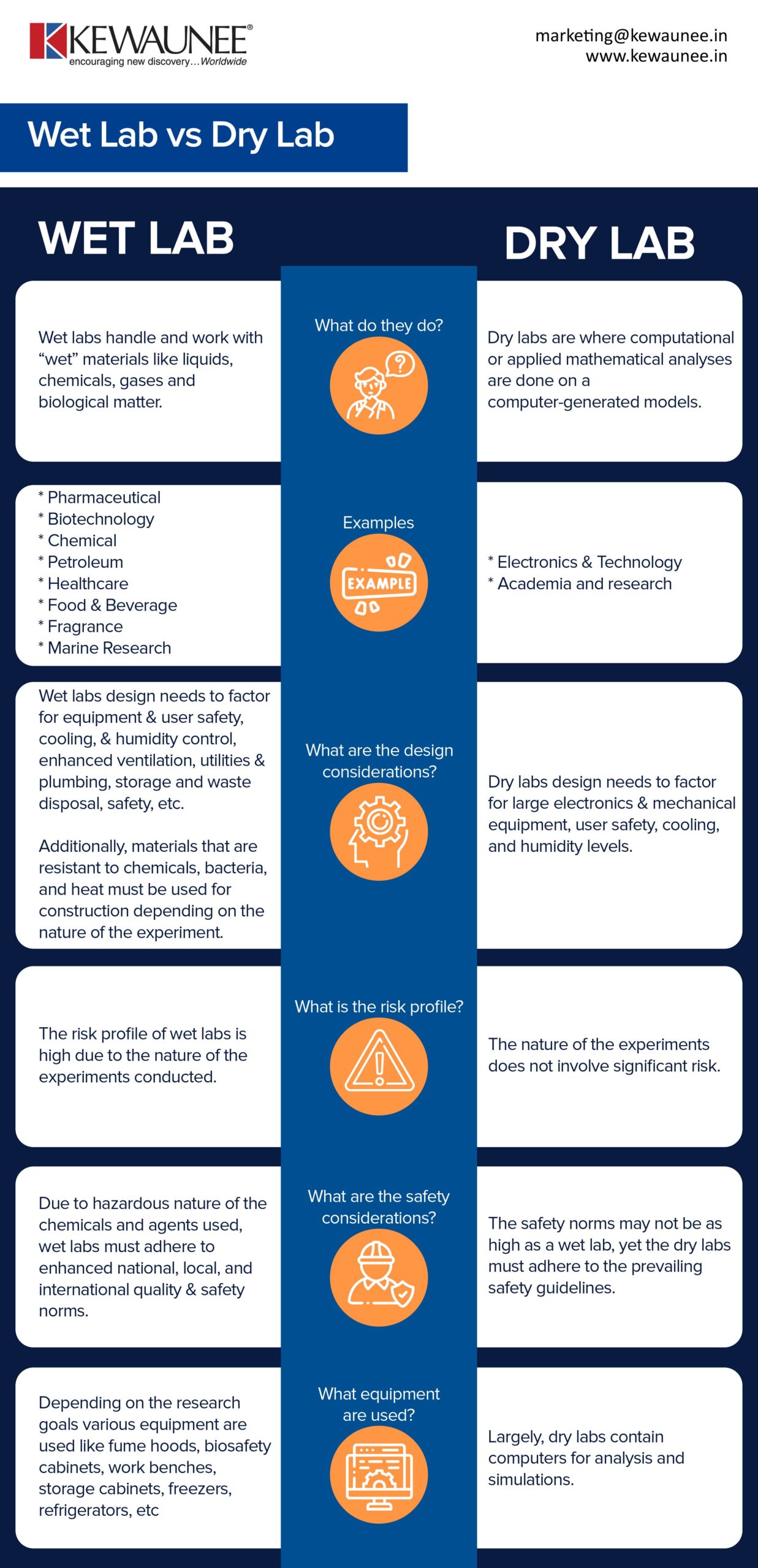Wet Lab vs Dry Lab
Laboratories are the temples of innovation. The labs provide environments for scientific research and experiments to advance the knowledge of the human society. Practically every field of knowledge involves research including pharmaceuticals, life sciences, petrochemicals, electronics, healthcare, food & beverage, etc.
When setting up a research centre or a new laboratory, one of the critical decisions is to choose whether your research facility will require a wet lab or a dry lab. Some decisions may involve choosing both.
The simplest distinction between wet and dry labs is in the materials they use – dry or wet. However, there’s more beyond the materials. In this blog, let’s understand the differences between a wet lab and a dry lab.
| WET LAB | DRY LAB | |
|---|---|---|
| What do they do? | Wet labs handle and work with “wet” materials like liquids, chemicals, gases, and biological matter. | Dry labs are where computational or applied mathematical analyses are done on a computer-generated models. |
| Examples | ||
| What are the design considerations? | Wet labs design needs to factor for equipment & user safety, cooling, and humidity control, enhanced ventilation, utilities and plumbing, storage and waste disposal, safety, etc.
Additionally, materials that are resistant to chemicals, bacteria, and heat must be used for construction depending on the nature of the experiment. |
Dry labs design needs to factor for large electronics & mechanical equipment, user safety, cooling, and humidity levels. |
| What is the risk profile? | The risk profile of wet labs is high due to the nature of the experiments conducted. | The nature of the experiments does not involve significant risk. |
| What are the safety considerations? | Due to hazardous nature of the chemicals and agents used, wet labs must adhere to enhanced national, local, and international quality & safety norms. | The safety norms may not be as high as a wet lab, yet the dry labs must adhere to the prevailing safety guidelines. |
| What equipment are used? | Depending on the research goals various equipment are used like fume hoods, biosafety cabinets, work benches, storage cabinets, freezers, refrigerators, etc | Largely, dry labs contain computers for analysis and simulations. |
Kewaunee advisory services are a unique blend of strategy and execution. We tap into our 113+ years of experience, hands-on learning from various industry segments, and multi-geography field work to deliver tangible business outcomes to our customers.
Our experts with knowledge of turnkey laboratory services and compliances guide you from start to finish. Leveraging the latest Industry 4.0 technologies, we help you in getting all your lab requirements right. Talk to us before you start your next lab project.
Comments are closed.











